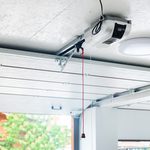Rigid-Foam Insulation-1
I installed an addition to my house this past summer using rigid foam panels. The end result is that where the old and the new walls meet there is exposed brick on the inside of the house which turned into ice this winter. What is causing it and what can I do to repair it?
As we have seen (above), all brick houses have a small air space between the inside stud wall and the outside brick wall. If you have added a wall perpendicular to the brick wall, that air space goes freely beyond the new wall, letting cold air get to what is now an inside brick wall. You must seal that air flow. Drill holes in the brick wall, between each brick from the top of the wall to the bottom of the wall, along the vertical corner where the new and the old walls meet. Do this on the inside and later cover the walls with trim. Make sure that you drill deep enough to enter the cavity between the brick wall and the stud wall. Through each hole, inject some foam insulation. Once you have gone from bottom to top, there will be a narrow, continuous strip of foam where you separate inside from outside.



